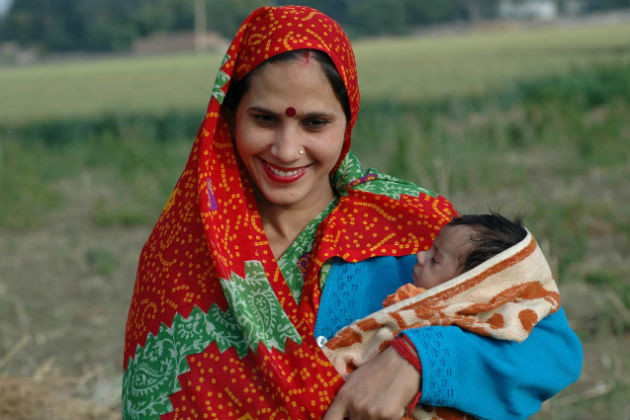Originally published on WHO
When Bandana Das, a midwife in India, washes her hands it is not simply routine, it is a critical step in reducing infection and saving the lives of mothers and newborns.
“I have seen mothers discharged from the health facility and then come back to the same facility with severe infections and high-temperatures,” says Bandana, the president of the Society of Midwives in India. “Many of these mothers do not survive.”
Worldwide, 30 000 women and 400 000 babies die every year from infections, such as puerperal sepsis, often caused by lack of water, sanitation and poor hand-washing practices. In an era of antimicrobial resistance it is crucial that all midwives wash their hands at key moments – before and after touching a patient, before medical procedures, and after being exposed to bodily fluids.
However, up to 70% of health workers do not adhere to recommended hand hygiene practices, according to WHO.
Health facilities worldwide lack safe water, sanitation, and hygiene
In India and many low- and middle-income countries, practicing good hand hygiene is not easy. Bandana, like many midwives in India, often does not have access to water, a toilet, or soap.
“In some places, water has been so dirty it is unusable,” she says. “It is very difficult to practice good hygiene in these circumstances.”
According to a WHO and UNICEF report, more than 1 in 3 health facilities in low- and middle-income countries do not have any access to water at all. When the reliability, safety, and distance of the water supply is taken into account, that ratio increases to 1 in 2.
Lack of water is only one challenge. Nearly 1 in 5 of these facilities do not have toilets and more than 1 in 3 does not have soap for hand washing. Clean water, functioning toilets and soap are all essential to protecting the lives of mothers and newborns during the time of birth.
Changing the practices of nurses and midwives
Even when they have access to water and soap, many health workers simply forget to wash their hands, despite regular demonstrations and monitoring.
With UNICEF, Bandana is conducting 3-day training for midwives and nurses across India with follow-up interventions. So far, the training has started to improve hand-washing compliance and water and sanitation standards.
The same training programme also assesses the water, sanitation, and hygiene standards in the facilities and recommends areas of improvement. This year, to support national efforts, the Indian Government launched a National Action Plan on Antimicrobial Resistance, which also includes infection prevention and control measures.
To assist countries in further improving hand hygiene and improving the quality of care in health facilities, WHO has produced training guides, awareness raising materials and infection prevention and control standards for health facilities.
Recently, WHO and UNICEF published a new tool, the Water and sanitation for health facility improvement tool (WASH FIT), which is a practical guide for improving quality care through water, sanitation and hygiene in health care facilities. The overall aim of using WASH FIT is to improve and sustainably maintain WASH services in health facilities.
WHO and UNICEF also launched a new Network for Improving Quality of Care for Maternal, Newborn and Child Health, which aims halve preventable deaths of pregnant women and newborns in health facilities by 2030. Countries in the Network will work to implement WHO’s Standards for Improving Quality of Maternal and Newborn Care in Health Facilities, which includes standards on clean water and sanitation.
“Handwashing and lack of water and sanitation is a fundamental constraint to quality of care,” says Fran McConville, midwifery adviser, WHO. “As midwives we must work in partnership to improve access to water, sanitation and electricity for all women and babies everywhere.”
Global indicators are currently under development to monitor and collect data in delivery rooms. The indicators will serve as the basis for the Sustainable Development Goals baseline report on water, sanitation and hygiene in health care facilities to be published by WHO and UNICEF in 2018.
Summary of WHO recommendations on hand hygiene
WHO recommends that to ensure all mother and babies get clean care, health workers should:
- wash hands at key moments;
- wear gloves;
- sterilize equipment;
- ensure the birthing area is clean;
- dispose of waste safely;
- deal with contaminated laundry.
Hand washing should occur at 5 key moments:
- before touching a patient;
- before clean/aseptic procedures;
- after body fluid exposure risks;
- after touching a patient; and
- after touching patient surroundings.
Hands should be cleaned by:
- Using alcohol-based hand rub (faster, more effective and better tolerated by skin than washing with soap and water) if hands are not visibly dirty; and
- Washing with soap and water when hands are visibly dirty, and after using the toilet.
